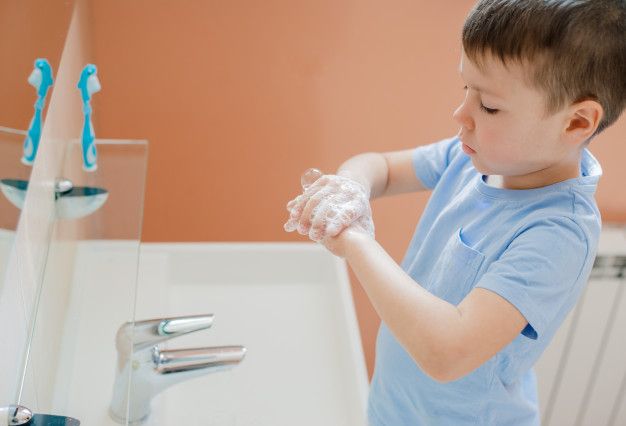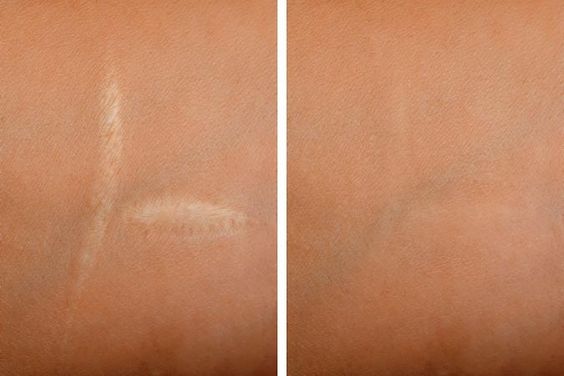Pigmentation after hand abrasions heals is a common side effect of skin self-repair. When new skin produces excessive melanin due to ultraviolet rays, friction, or inflammation, the original light-colored scar will turn into a brown mark. Many people mistakenly believe that pigmentation is an inevitable result, but they don't know that precise care starting from the scab stage can reduce the incidence of pigmentation by more than 60%.

How to standardize cleaning?
Improper wound cleaning will directly increase the risk of pigmentation. The traditional concept is that "wounds should not be exposed to water", but modern care concepts emphasize flushing with running water. The water temperature should be controlled at 32-35°C to avoid overheating, which causes vasodilation and increases the inflammatory response. Use a cotton pad with non-alcoholic saline to wipe outward in a spiral from the wound to remove dust, bacteria, and necrotic tissue. For abrasions on joints, gently wipe dry with sterile gauze after cleaning to prevent residual moisture in the skin folds from causing maceration.
When is the most effective time to apply silicone gel scar patch?
The moment the scabs fall off is the golden window period for preventing pigmentation. At this time, the thickness of the new epidermis is only 70% of normal skin, and the sensitivity to ultraviolet rays increases by 3 times. Silicone gel scar patch works through three mechanisms: its physical barrier function can block 98% of UVB rays; the polymer network structure maintains a moist environment for the wound and reduces the release of inflammatory factors; continuous low-dose pressure can inhibit excessive capillary proliferation. It is recommended to wear it for more than 12 hours a day for 3-6 months. This "continuous compression therapy" can reduce the area of pigmentation by 40%.
Is sun protection so important?
Ultraviolet rays are a catalyst for pigmentation, but simply applying sunscreen is not enough. For hands that move more frequently, it is recommended to use a combination of "hard sunscreen + soft sunscreen": wear UPF50+ sunscreen gloves when going out, and the knitting density must reach more than 200 stitches per square centimeter; add a physical sunscreen containing zinc oxide to the outer layer of the scar patch to form a double protection. It is worth noting that sunscreen products must be used after the wound is completely closed. Applying too early may clog the pores and prolong the healing period.
How does dietary conditioning affect pigmentation metabolism?
A high-sugar, high-fat diet can aggravate melanin deposition through a "glycation reaction". Studies have shown that foods with a glycemic index (GI) > 70 can increase the level of inflammatory factors by 25%. It is recommended to increase the intake of fruits and vegetables rich in vitamin C, such as citrus and bell peppers, whose antioxidant properties can inhibit tyrosinase activity; moderate supplementation of Omega-3 fatty acids, such as deep-sea fish and flax seeds, can regulate inflammatory responses. However, excessive intake of photosensitive foods, such as celery and lemons, should be avoided, as they may increase the skin's sensitivity to ultraviolet rays.

What should we pay attention to during nursing?
Low temperature and dryness in winter can reduce the barrier function of new skin by 30%. At this time, ceramide moisturizers should be applied to the scar patch to enhance the skin's ability to lock in moisture. In summer, when sweating is high, it is recommended to choose a scarred patch with a microporous structure, which is 50% more breathable than ordinary ones. For medical staff who need to wash their hands frequently, a waterproof and breathable film can be applied on the surface of the scar patch to keep it fixed and avoid mechanical damage caused by frequent removal of the patch. If the scar is in the hyperplastic stage, silicone gel preparations and pulsed dye lasers can be used in combination. Its 585nm wavelength can accurately destroy dilated capillaries.
The management of pigmentation of hand abrasions is a long-term battle, which requires systematic intervention from cleaning, protection, nutrition, to treatment. As the core means, the effect of silicone gel scar dressing depends on the precise control of the timing and method of use. Remember, pigmentation is not the end of repair, but a signal to start scientific care. Every detail may become a key variable in reversing pigmentation. For more information on Innomed®Silicone Scar Dressing, refer to the Previous Articles. If you have customized needs, you are welcome to contact us; You Wholeheartedly. At longterm medical, we transform this data by Innovating and Developing Products that Make Life easier for those who need loving care.
Editor: kiki Jia

 English
English عربى
عربى Español
Español русский
русский 中文简体
中文简体








